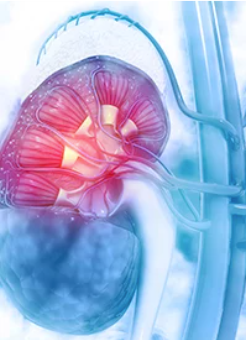Emerging Therapies Prompt Nuanced AE Management in Kidney Cancer
Kiran Virdee, RN, BSN, CCRN-K, outlines the best practices for the management of adverse effects during the treatment of kidney cancer.
Kindey Cancer

Emerging therapies for the treatment of patients with kideny cancer have changed management strategies for adverse effects (AEs), according to Kiran Virdee, RN, BSN, CCRN-K.
“[Although] it is important to provide patient education on [AE] management, it is also imperative to factor individual patient challenges [when assessing quality of life changes],” Virdee, a registered nurse at Memorial Sloan Kettering Cancer Center, said during a presentation titled “Daily Aspects of Side Effect Management” focusing in on kidney cancer treatments, during the 2022 International Kidney Cancer Symposium.
As part of her presentation, Virdee noted which physical manifestations of AEs have been linked to certain classes of drugs her clinical practice. For instance, for patients receiving tyrosine kinase inhibitor therapy, the common AEs have included hypertension, diarrhea, dermatitis, mucositis, fatigue, and nausea. With immunotherapy, the most common AEs have been colitis, dermatitis, pruritis, pneumonitis, endocrinopathies, and myocarditis. For radiotherapy, fatigue, pancytopenia, dermatitis, edema, and nausea, are the most frequently observed AEs, and with surgery, the main AEs have included pain, wound care, and fatigue.
She noted that the following list is not comprehensive but has found in her clinical experience that hypertension, diarrhea, dermatitis, mucositis, fatigue, and decreased appetite tend to be the AEs patients experience the most difficulty with day to day. Therefore, she outlined some key strategies in helping patients mitigate these daily toxicities.
Hypertension
For patients experiencing hypertension, Virdee recommends conducting routine and accurate blood pressure reading and keeping a daily log of patient blood pressure.
Diarrhea
Virdee stressed the importance of recording baseline bowel movements to gauge the extent to which diarrhea is affecting patients during treatments. For patients who experience diarrhea, diet modifications, routine stool sample collections, and antidiarrheal medication are all key aspects of management.
Dermatitis
Dermatitis also affects many patients. Strategies to manage dermatitis include daily skin checks, emollient based creams, topical steroids, and consultations with a dermatologist.
Mucositis
A review of a patient’s mouth care routine may be needed if they are experiencing mucositis. Steroid rinses and diet modifications are useful for AE management.
Fatigue
Prioritizing activity is a key component of managing fatigue, Virdee noted. In addition, ensuring that patients maintain a well-balanced diet, limit naps, and engage in relaxing activities is important as well.
Decreased Appetite
Finally, decrease in appetite will be felt by many patients receiving kidney cancer therapy. Encouraging small frequent meals, preplanning meals and snacks, and encouraging patients to replete their calorie intake through fluids are all good strategies aimed at this AE. Collaborating with a nutritionists can also help patients manage this toxicity.
Key Takeaways
“I want to really emphasize that when we review possible AEs, patients often have an overwhelming feeling as we go down the list,” Virdee said. “When we review patient education, there are certain things that nurses specifically need to understand.”
For example, nurses should try and assess the patient’s level of health literacy, and how much they understand about their disease, including what their treatment regimen will be and next steps in their care journey.
“Are there any cultural barriers involved to patient education itself?” Virdee asked, noting that, in her opinion, “One of the most common or most important barriers is a patient's willingness to learn.”
In Virdee’s experience, sometimes, by the time a nurse greets a patient following this visit with the medical oncologist, patients may have already reached their “tipping point” for information overload [and] may be unable to absorb any more information.
“Patient education, of course, is not finite. It’s an ongoing process throughout the treatment itself,” she said. Making an effort to check in throughout treatment is key for continuing to assess and respond to patients concerns. Virdee also noted that addressing specifics such as, when patients should expect to experience different AEs, who to call when it happens, and what to do when office are closed (ie, after hours or on the weekends) is also vital.
Moreover, according to Virdee, there are many challenges that may impact a patient’s quality of life which do not fall under the umbrella of the physical manifestations of AEs. For example, patients may be afraid of discontinuing treatment and therefore be reluctant to report symptoms to their health care provider.
Patients may also face practical concerns, such as being unable to arrange transportation to and from appointments. They may be unable to continue working and be faced with financial toxicities such as not being able to support their family. Support services also play a role in affecting quality of life in that individuals may lack access to homecare services and experience delays in referrals for further care.



